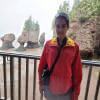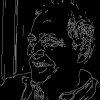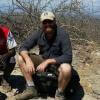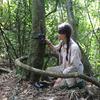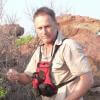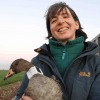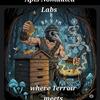Human-wildlife conflict and coexistence is a shockingly common problem, often with enormous consequences for both individual animals and entire populations.
When human-wildlife conflict comes to mind, you may immediately think of wildlife crime instead - which isn't wrong, since many regions with wildlife crime problems like poaching are also areas where people may frequently deal with human-wildlife conflict, causing the two issues to go hand-in-hand. But human-wildlife conflict is a much broader issue encompassing many ways that human presence and interference can cause problems for us and animals alike. Human-wildlife conflict includes:
- Elephants trampling a farmer's crops, resulting in retaliation
- New real estate developments infringing on ecosystems where predator species live, leading to predators having less territory and less food, which in turn leads to predators attacking domestic animals and livestock
- Freeways dividing the territory of animals like mountain lions, leading to wildlife venturing into neighborhoods or being killed by cars
- Lead bullets used in hunting causing scavengers like condors to die of lead poisoning
These are just a few examples of how humans can negatively impact wildlife, and it's clear to see how many of these scenarios could escalate. Human-wildlife conflict solutions don't just include ways in which we can prevent these issues (for example, through tracking predators, monitoring populations' territories, or building barriers and wildlife crossings monitored by sensors), but also the ways in which we can help people connect with wildlife and care about learning to live alongside them.
If you're interested in solutions that can prevent human-wildlife conflict, join this group and get to know the people who are working to protect and save species around the world!
Header image: Casey Allen on Unsplash
No showcases have been added to this group yet.
- @Doniham
- | She/her
Machine Learning Developer willing to contribute to AI for the planet projects
- 0 Resources
- 2 Discussions
- 3 Groups
- @cjturner
- | he/him
Computational Ecologist working on camera traps, audio, tracking and remote sensing.
- 0 Resources
- 0 Discussions
- 4 Groups
- @Aoife_Göppert
- | She/ Her
PhD research student at Queen's University Belfast, a QUADRAT DTP funded project.
- 0 Resources
- 0 Discussions
- 10 Groups
Entrepreneur building AI-driven acoustic monitoring technology for comprehensive wildlife conservation, protection and ecosystem health monitoring.

- 0 Resources
- 0 Discussions
- 4 Groups
- @ChrisThouless
- | Dr
Director of Elephant Crisis Fund, Research Director of Save the Elephants
- 0 Resources
- 0 Discussions
- 2 Groups
- @Aurora
- | she/her
I'm a PhD student and the main topic of my research project is large carnivores' activity rhythms. I am passionate about statistical modeling, specifically through a Bayesian approach.
- 0 Resources
- 1 Discussions
- 6 Groups
Forgotten Parks Foundation
- 0 Resources
- 3 Discussions
- 5 Groups
- 0 Resources
- 0 Discussions
- 2 Groups
- @MarissaMilstein
- | she/her
- 0 Resources
- 0 Discussions
- 3 Groups
- @viquilassaga
- | She/her
Im a biologist at the National University of Cordoba and I did my final thesis on mammals in a reserve in my province. Also, I´m PM4R Master certificated for BID and I work as a Project Manager at Natura International, an NGO dedicated to the creation of protected areas.
- 0 Resources
- 0 Discussions
- 7 Groups
- @billardball8
- | She/Her
- 0 Resources
- 0 Discussions
- 6 Groups
Sensing Clues Foundation



- 0 Resources
- 44 Discussions
- 9 Groups
The inherent complexity of not only deploying technologies in the field but also doing so in a scientifically rigorous manner can prove a substantial barrier for the effective use of conservation technologies, and clear...
11 October 2017
The Domain Awareness System (DAS) is a revolution in monitoring technology, creating real-time awareness of protected areas assets. This technology has the potential to completely change standard monitoring procedures...
26 September 2017
Article
Human-wildlife conflict can be difficult to understand without knowing its impact on people and communities. In this case study, authored by community member and Human Wildlife Conflict Tech Challenge coordinator Femke...
19 September 2017
Earlier this year, WILDLABS community member Shashank Srinivasan was involved in an operation to capture the Pilibhit man-eater. In this account, he shares how they successfully managed to tranquilize and capture the...
10 August 2017
Frustrated by the limitations of the tools that were available for managing large camera trap data sets, Heidi Hendry and Chris Mann set out to develop something that met their needs, and thus, Camelot was born. In...
7 July 2017
Funding
The European Space Agency is calling for Kick-Start ideas to leverage space technology for wildlife protection. Three main topics of interest have been identified: 1) Wildlife monitoring, tracking and inventory, 2)...
5 July 2017
In this From the Field interview, we speak to Eric Becker, a conservation technology engineer at the World Wildlife Fund US. He talks about his work in technology design and the key challenges he's experienced...
22 May 2017
In this From the Field interview, we speak to Dr. Raman Sukumar, a world renowned expert on Asian elephant conservation. He shares his thoughts on how technology could be used for mitigating elephant-human conflict, and...
5 April 2017
The Camera Traps group is one the most active in our community, with members keen to discuss approaches to data management and processing, study design, and new software and hardware developments. Indeed, the top entry...
23 March 2017
In our new From the Field series, we're speaking with WILDLABS members to discover how they use technology in their work. Through these interviews we will be showcasing the variety of technologies our members are...
22 March 2017
Are you ready for this year's #Tech4Wildlife Photo Challenge? In anticipation, we're counting down our ten favourite entries from last year. Do you think you can top these?
1 March 2017
Carpathian shepherd dogs have been reintroduced to the Zarand Landscape Corridor to guard livestock and help mitigate human-wildlife conflict in Romania.
28 February 2017
October 2025
event
June 2023
event
May 2023
event
32 Products
3 R&D Projects
44 Organisations
Recently updated products
Recently updated R&D Projects
Recently updated organisations
| Description | Activity | Replies | Groups | Updated |
|---|---|---|---|---|
| Hi Luciano,My name is Pablo Saumann and I'm founder, director and live in a Private Conservation Project in Chile name Parque Valle los Ulmos. We are a group of people in the goal... |
|
Emerging Tech, Human-Wildlife Coexistence, Latin America Community | 11 hours 19 minutes ago | |
| Hi Nikita, If you haven't already, I'd recommend reaching out to the folks at the Cornell Ornithology lab. They're really glued into all things bird. In particular, I... |
|
Animal Movement, Drones, Emerging Tech, Human-Wildlife Coexistence | 5 months ago | |
| Sent to some South African local friends. |
|
Community Base, Early Career, Human-Wildlife Coexistence, Women in Conservation Tech Programme (WiCT) | 6 days 9 hours ago | |
| want to join 2025 contest for humpback whale photos in Juneo Alaska of Kelp |
|
Citizen Science, Conservation Tech Training and Education, Drones, Emerging Tech, Geospatial, Human-Wildlife Coexistence, Marine Conservation, Open Source Solutions | 1 week 5 days ago | |
| 🐝 Apis Nomadica Labs: Mapping Royal Jelly Terroir Through Mobile Bee BiotechAbout Us:Apis Nomadica Labs is a mobile apiary research... |
|
Acoustics, Conservation Tech Training and Education, Animal Movement, Human-Wildlife Coexistence | 2 weeks 5 days ago | |
| You could just throw out that data, but I think you'd be doing yourself a disservice and missing out on some interesting insights. Are you training the AI with just pre-COVID... |
|
AI for Conservation, Animal Movement, Data Management & Mobilisation, Human-Wildlife Coexistence | 3 weeks 3 days ago | |
| Good question. Not sure everyone recommends ArcGIS anymore, but it is commonly used as a desktop GIS. However, it's not free. QGIS, R, and various Python packages are free. But... |
|
Citizen Science, Geospatial, Human-Wildlife Coexistence | 4 weeks 1 day ago | |
| Wonderful video! Really impressive :) |
|
Animal Movement, Human-Wildlife Coexistence, Latin America Community | 6 months 3 weeks ago | |
| Really appreciate this discussion and the collective interest in humane, non-lethal deterrent solutions.We at Katidhan, based in India, have been working on a similar innovation... |
+24
|
Human-Wildlife Coexistence | 1 month 1 week ago | |
| Looking forward to capturing the first polar bear. On film of course. |
|
Human-Wildlife Coexistence | 2 months ago | |
| Thank you for your reply, ChadI meant 10 as a whole, indeed. Perhaps you see your post in one group, but since it is tagged for all groups, I assumed you meant 10 in total.In your... |
|
Acoustics, AI for Conservation, Animal Movement, Camera Traps, Citizen Science, Climate Change, Community Base, Connectivity, Drones, eDNA & Genomics, Emerging Tech, Funding and Finance, Geospatial, Human-Wildlife Coexistence, Software Development, Wildlife Crime | 2 months ago | |
| Thank you for your comment Chris! Using these tools has made a huge difference in the way we can monitor and manage Invasive Alien Vegetation. I hope you are able to integrate... |
|
AI for Conservation, Citizen Science, Conservation Tech Training and Education, Drones, Geospatial, Human-Wildlife Coexistence, Open Source Solutions | 2 months 1 week ago |

